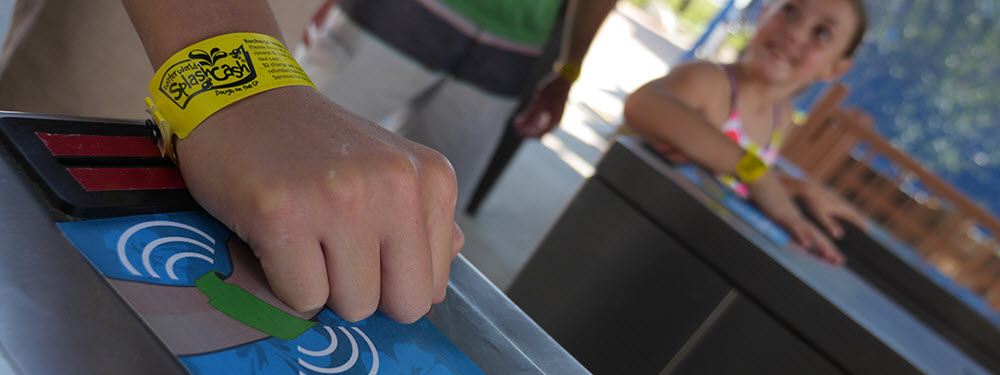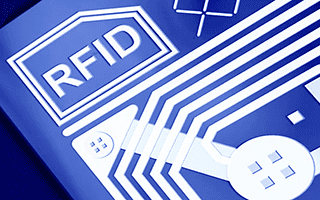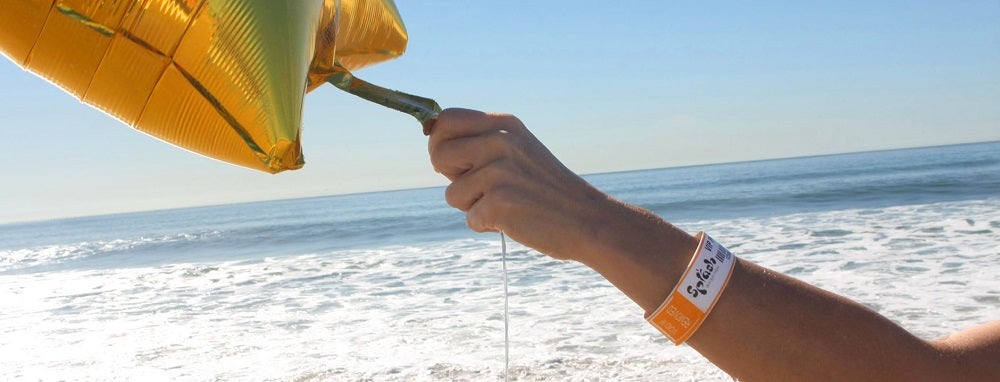How RFID Wristbands Work, Decoded

Ever wonder how RFID wristbands work? You’ve probably seen them at music festivals such as South by Southwest or Sasquatch!. We often get questions about how RFID technologies really work. So today, we’ll explain RFID in an easy-to-understand way.
Before we get started explaining how RFID wristbands work, it’s important to know how to tell a non-RFID and RFID-equipped wristband apart. RFID-enabled wristbands look like standard festival wristbands from a distance, but up close you will notice small differences in their aesthetics and feel. Similar to custom wristbands, you can print your own designs, logos, and messaging onto the wristband itself.
 |
One common type of RFID wristband features a hard plastic chip or some kind of enclosure which give them a distinct look. In reality, they serve to protect the RFID tag inside. |
 |
Some RFID wristbands do not have a hard plastic piece and instead look just like vinyl or plastic wristbands from a distance. When you touch these wristbands however, you’ll notice almost right away that they feel slightly thicker. You can sometimes also feel the printed RFID tag underneath. |
| A third type of RFID wristband features a soft rubber bracelet, but with a lump that houses the RFID chip. |
Types of RFID Systems
RFID stands for Radio Frequency Identification and uses radio waves to transmit information between two or more devices. At the most basic level, an RFID system is comprised of a tag and a reader device. The tag is comprised of a transmitter, receiver, and an integrated circuit that stores information. A RFID tag can also have a battery, though it depends on the type of tag. There are three types of tags: passive, active, and battery-assisted.
-
Passive – Passive RFID tags do not have a battery built-in and they utilize radio energy transmitted by the reader for power.
-
Active – There is an onboard battery that powers the RFID tag, which transmits information regularly without requiring a reader.
-
Battery-Assisted – The RFID tag contains a battery that only powers the tag when in the presence of a reader.
Communication between the tag and reader does not require line-of-sight or physical connection. But there are limits on range, depending on what frequency the system operates at.
-
Low Frequency (125-134 kHz) – Very short read/write range of no more than a few centimeters, with limited memory storage capacity. Low data transmission speeds and few tags can be read at once.
-
High Frequency (13.56 MHz) – Short read/write range of several inches, but with larger memory capacities and medium data transfer rates.
-
Ultra-High Frequency (433 MHz & 856-960 MHz) – Long distance read/write range of up to 70 feet and large data capacities. High data transfer rates as well.
When it comes to RFID wristband systems at parks and festivals, most operate at high frequency with passive tags. A low power radio wave activates the tag to read and write data that is used to identify a guest.
How Much Data Can an RFID Tag Store?
An important element in how RFID wristbands work is storage capacity. The largest passive RFID tags can store up to 3720 bytes, or 3.72 kilobytes of information. That may seem like a small amount, but that is enough to store your name, address, credit card numbers, date of birth, and whatever identifying information the local administrator wants to track.
Ultra-high frequency tags can store up to 8 kilobytes of information, but such tags are typically reserved for use in the aerospace industry. For wristbands and access control systems, RFID tags typically are 3 kilobytes or smaller and do not contain sensitive information such as your social security number.
Data you sometimes find stored on RFID tags can include identification credentials, purchasing credits, vouchers, and even social media integration. So when you walk through a checkpoint, you can choose to have your activity posted to social media automatically. For hotels, a RFID system can even replace keycards for access control.
Dorney Park, an amusement park in Allentown, PA implemented a FastPay system that used PDC’s RFID wristbands and saw increased customer spending and greater revenue. Meanwhile, customers enjoyed peace of mind knowing that their credit cards remained safely tucked away in lockers.
RFID as a Tracking Device
Since most RFID wristbands use passive tags that operate at high frequency, they cannot track wearers actively and are limited to very short distances. However, a RFID system may track a wearer’s last known location by recording the last checkpoint they used their wristband at. For venues, RFID wristbands serve best as cashless contactless payment and access control.
Conclusion
RFID wristband systems and RFID technology in general is here to stay. If increased profits and more efficient payment systems are a priority for you, then RFID wristbands are a natural fit. Armed with the information above, you now understand how RFID wristbands work and know their uses and limitations.

 FREE GROUND SHIPPING OVER $99
FREE GROUND SHIPPING OVER $99
 SAFE AND SECURE
SAFE AND SECURE









valuable information
Thanks for sharing the valuable information to us. Good work! we also have a blog. Please Feel free to visit our site “RFID4U – Shop RFID Hardware equipment and RFID Software for Asset Tracking” . Keep Posting :)
RFID Technology | RFID, NFC, Barcode and Mobility | RFID4U
Thank you very interesting! Quick question.
Is it possible to send a pre-programmed message to a mobile phone from a RFID tag?
In reply to Shanti for anyone else reading, you could identify multiple users easily by tracking location, if one person was to wear them all you would have only one simultaneous location.
Hi,
Actually, I am interested for the RFID tracking system for my employees. Can you please tell me…
How can I identify that multiple users wore the bands or a single user has wore all the bands.
Thanks